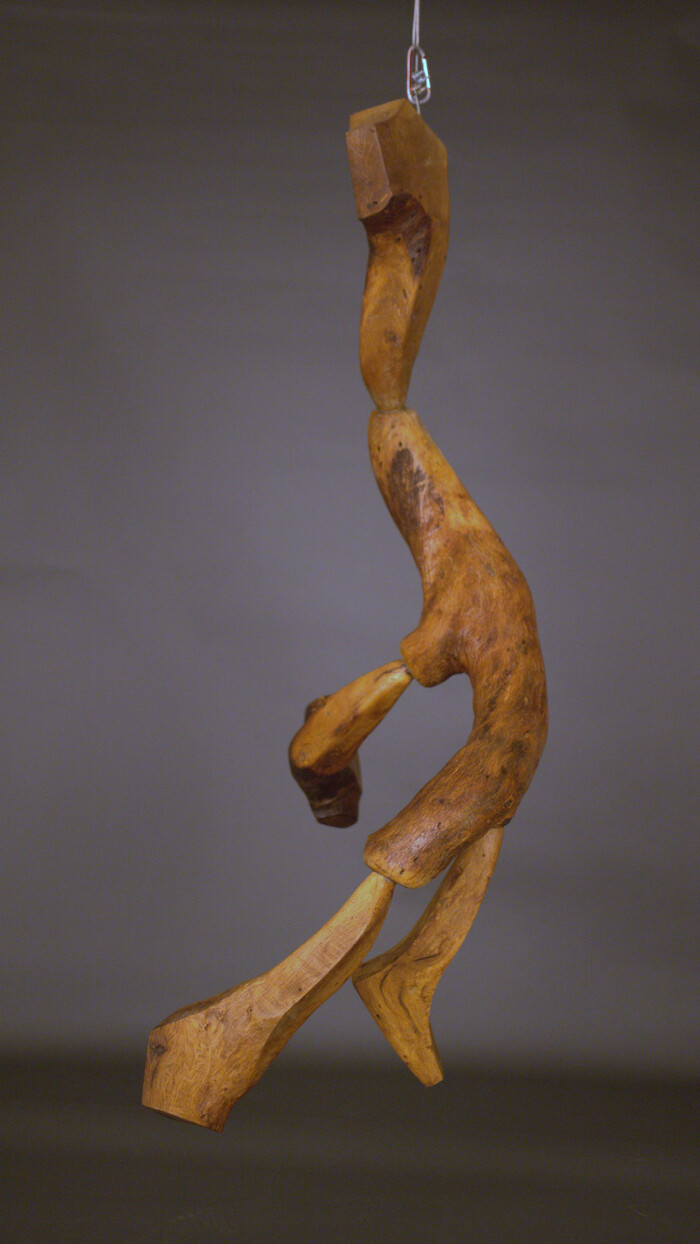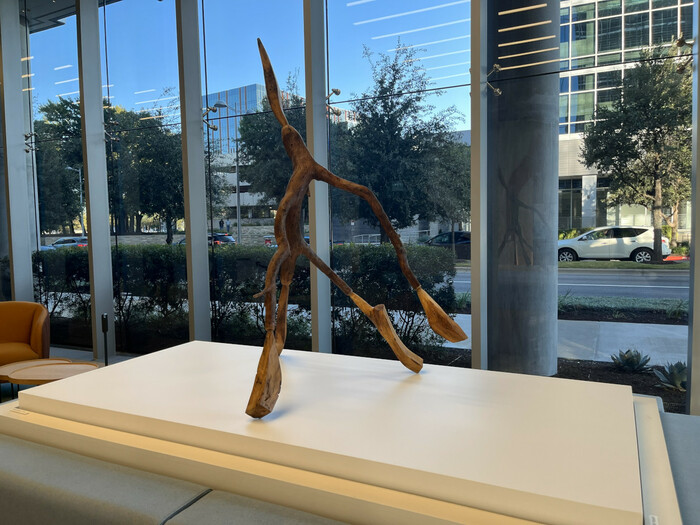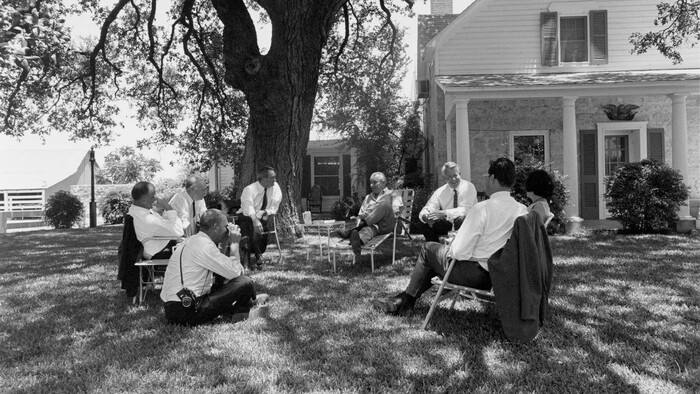History Man and Walking Man – Provenance
James Surls, renowned Texas Artist, was commissioned by the Friends of the LBJ National Historical Park, to create art from what is known as the Cabinet Oak that is growing in the
yard of the Texas White House. As President, Lyndon Johnson held many meetings, including meetings with cabinet members, under the sprawling live oak tree in his front yard, next to his
swimming pool. For that reason, the tree became known as the Cabinet Oak. In 2019, a huge branch of the tree broke off. The park service searched for ways to turn this
devastating event into something positive and memorable. As a result, The Friends of Lyndon B. Johnson National Historical Park stepped forward and invited 53 artists to receive portions
of the wood and without conditions use the wood to reflect their vision of its meaning. Renowned artist James Surls used his section of the branch to create three art pieces,
including the two identified below that are being offered for sale. These works are unique examples of Surls artistry, showcasing his devotion to the LBJ legacy and to the beauty and
history of the wood itself.
History Man
James Surls, 2024
60 inches times 36 inches times 33 inches
Free standing
Whistling Man
James Surls, 2024
50 inches times 29 inches times 19 inches
Hanging
Both pieces were created from the LBJ Ranch Cabinet Oak Tree at the Lyndon B. Johnson National Historical Park in honor of Lyndon and Lady Bird Johnson.
For the LBJ and Lady Bird Home Place When I was a little boy growing up in and around the Texas woodlands, I breathed deep the nature of my surroundings, from green grass, creek beds and well water, I moved through underbrush and trees growing from seedlings to saplings then going on to be the canopy spreading out above me. But throughout all of the categories and ways of grouping trees, none, stand-alone, like the Shade Tree, that big full and voluptuous beauty giving its relief
from the radiant heat of the Texas Sun. These trees took on a mythical position in the minds of the inhabitants that traversed their ground. They stood in glory, through it all, the blistering
heat, the freezing cold, yet offering years of comforting shade to the reality of deep conversations going on under their winged limbs, so it was put in the hands of those who History Walked their way beneath and under and gathered and engaged in dialog that was to change the world. I am not a little boy anymore, but rather someone who has lived through
the times under the shade tree, I know and understand the reverence bestowed upon and held by the long arms of the big oak in the front yard of the place where life was lived. The
shade tree was as much a part of the gravitational force as was the living room, the kitchen and the porch. For me to be able to step into that as a historical reality brings honor to my
stock and trade, to have the remnants and remains of a limb from such a tree brings me to appoint of psychological and historical responsibility, to honor times past as well as to give rise
to the Now of our time. To hold such a piece of wood in my hand and then form it into a symbol with and of meaning and content, then returning its own to the world at large, is a true
honor.
James Surls





